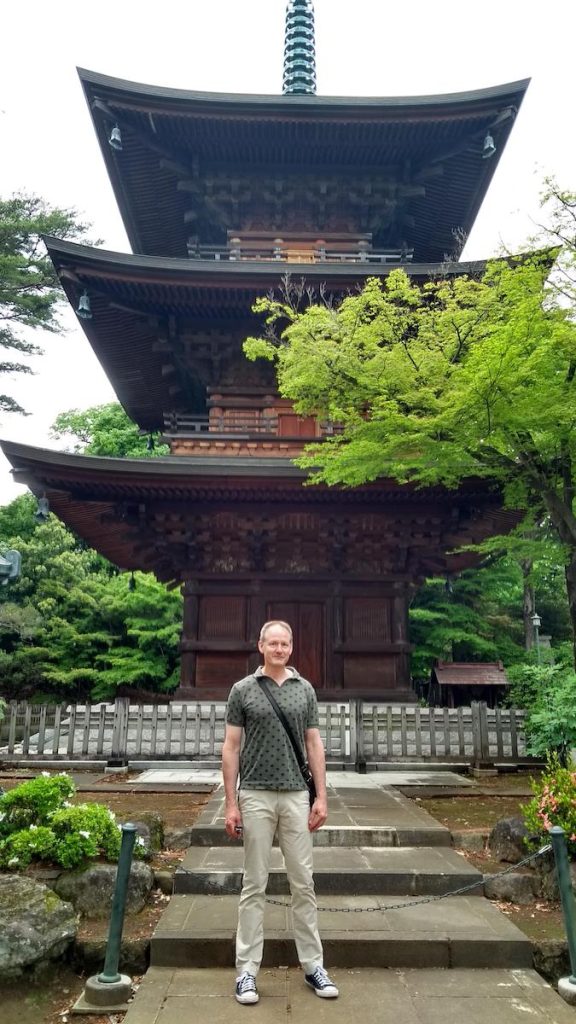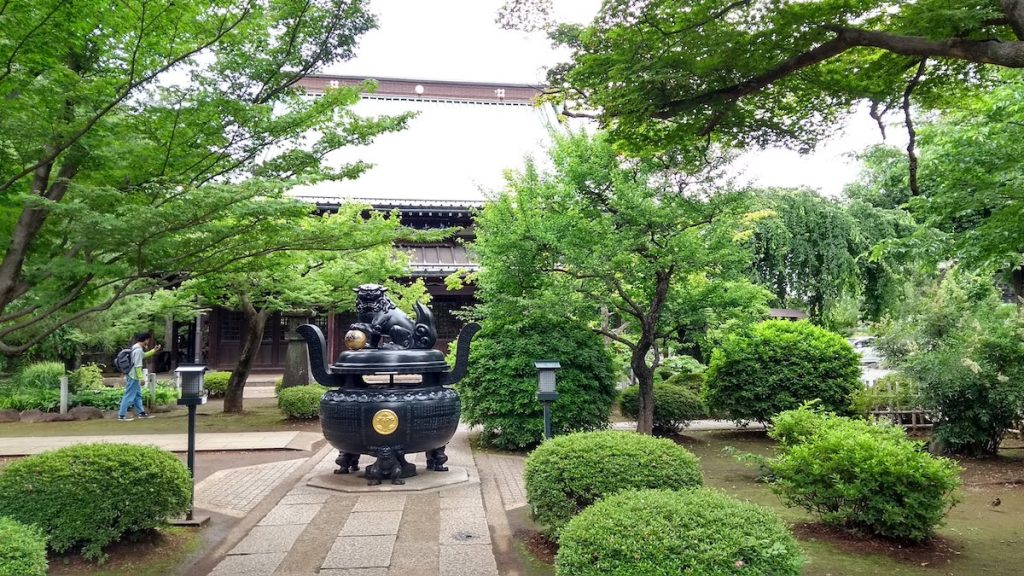
Gotokuji temple (護国寺), in a quiet corner of Tokyo’s Setagaya ward, is said to be the origin of maneki-neko, the beckoning cat figure you see next to the cash register in Asian restaurants.
I decided to cross the city and pay my respects at this place because I had a cat for many years, whose friendship was important to me.
Misled — as is so often the case — by Google Maps, I left the train far too soon, but a long winding walk through narrow residential streets made me glad I’d approached this place on foot.
According to legend, a 17th century feudal lord of the Omi-Hikone domain called Ii Naotaka was passing this way when he was caught in a sudden thunderstorm. A cat living in the temple beckoned him inside. He accepted this invitation and just missed being struck by lightning.
He fixed the place up out of gratitude to this fortuitous feline, and dedicated the temple to the Ii clan.
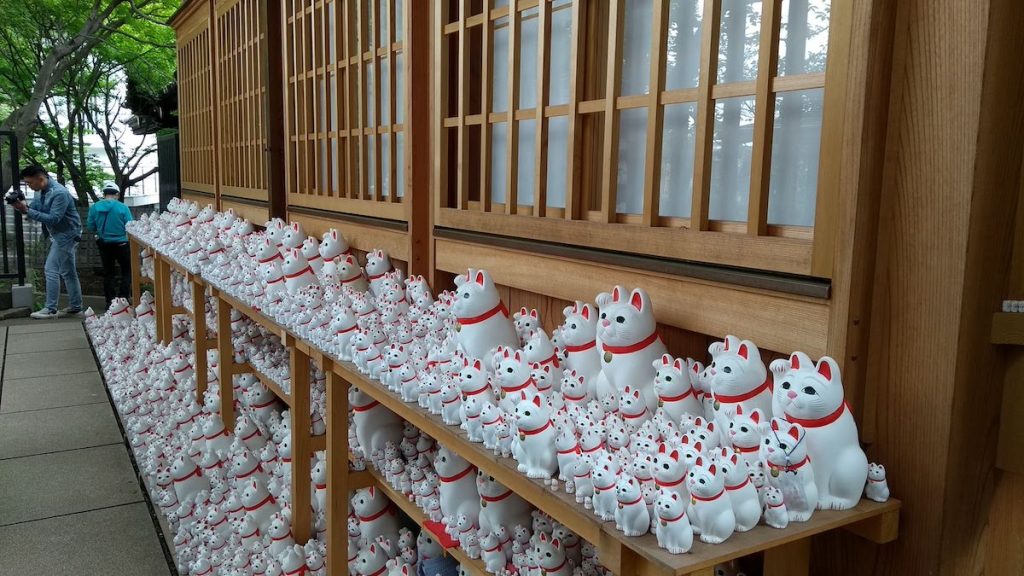
As for the cat, it was deified as “Fortune Inviting Kannon” — Kannon being the bodhisattva of mercy and compassion. Those who believed the cat brought good luck called it maneki-neko, which just means ‘beckoning cat’.
As a result, this place has more plaster cats than a cathouse. Visitors to Gotokuji buy the figurines and make a wish or prayer on it, leaving it at the temple as an offering.
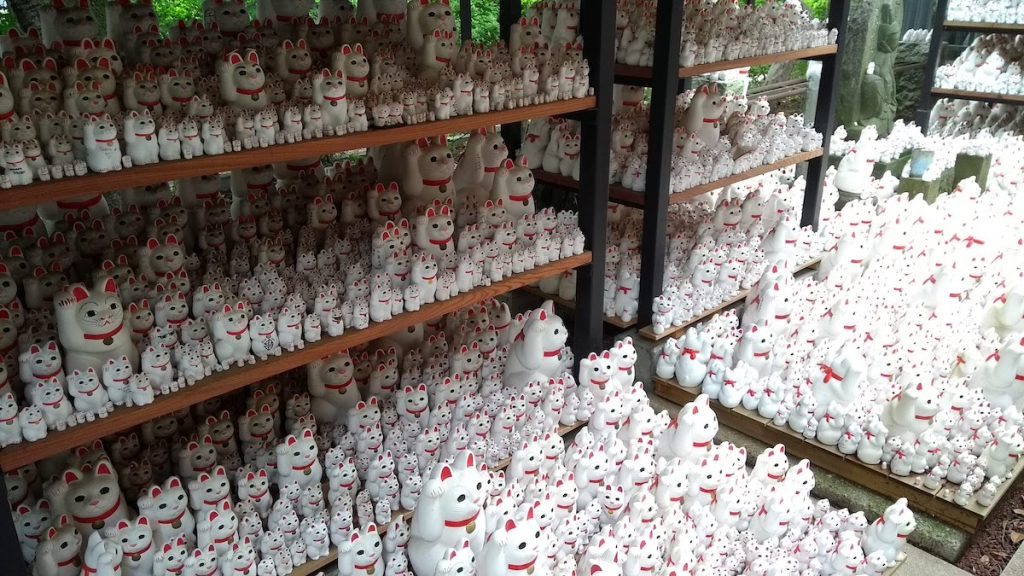
You can also buy a wooden ema plaque with a cat on the front, and a blank space on the back to write your wish. They’re typically hung up at the temple, or taken home and returned to the temple and tied to a wooden rack when the wish has been granted.
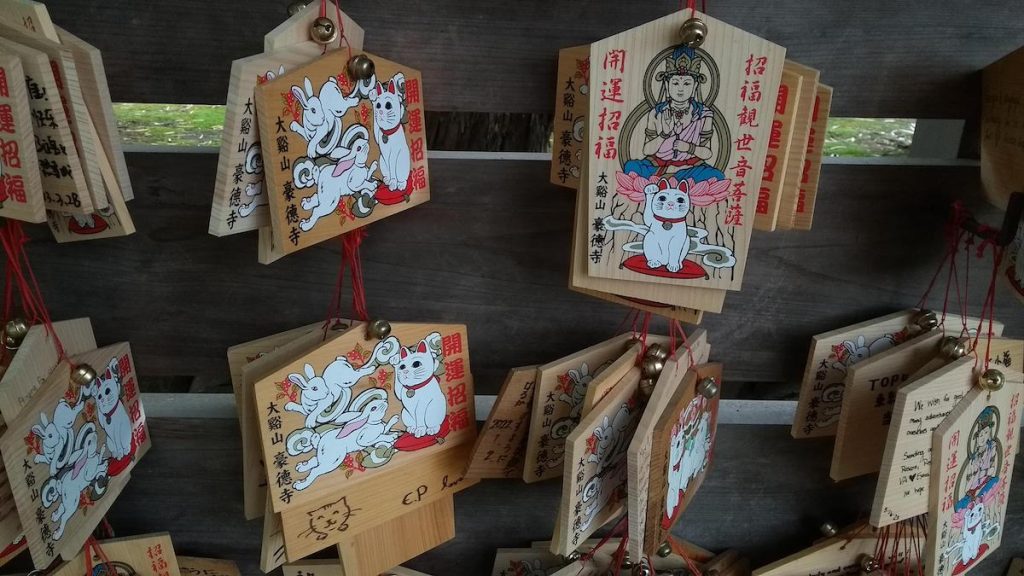
You might also buy one for decorative purposes, like I did. It sits on top of a bookcase overlooking my desk, hopefully bringing me good fortune in the world of scribbling and publishing.
Like most temples, this one also housed a cemetery. I only learned later that the founder of Kyokushin karate Ōyama Masutatsu is buried there. I’d read about Mas Oyama in my martial art decades: his legendary strength, his fists — where the first two knuckles had become fused from years of striking practice — and his predilection for fighting bulls empty-handed as a demonstration of his skills. In case you’re wondering, he apparently fought 52 bulls, killing three, and breaking the horns off the other 48 with knife-hand strikes.
I wonder what he would have thought of the cheerful cat statues that filled every corner of the temple next to his grave?
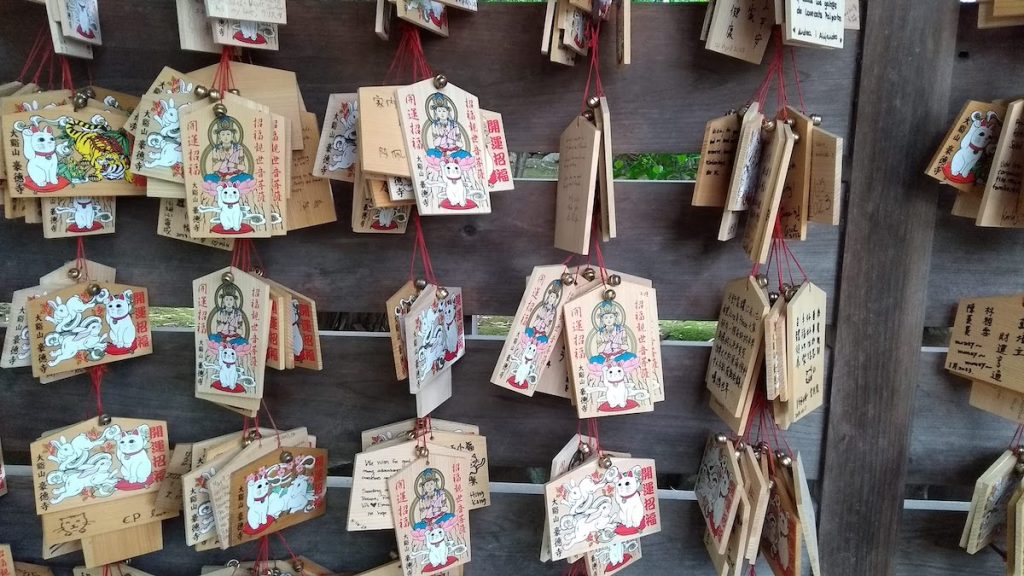
In truth, I didn’t wonder very long because all that walking worked up an appetite.
And so I tucked a newly purchased ema plaque into my bag and trudged to the train. I’d spotted a noodle shop near our Tokyo Tower area rental flat and was desperate for a bowl of miso ramen.
